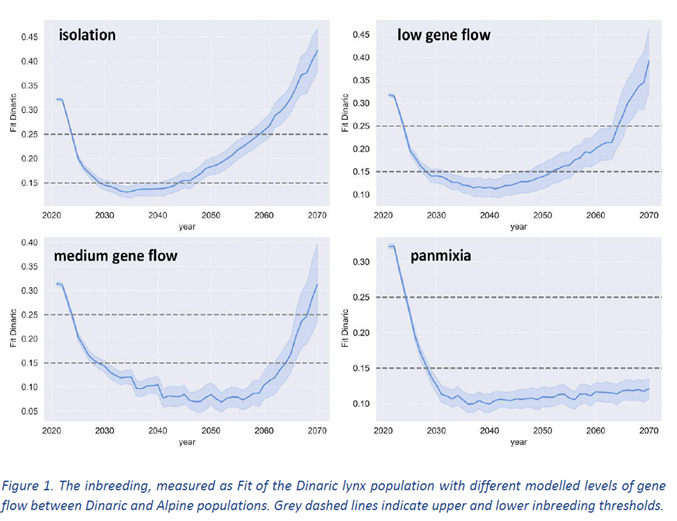During the LIFE Lynx project, we have learned a lot about the genetics and demography of the lynx. Data, obtained in scope of the project, were used to update the computer model of lynx population development, which helps us to take a look into the future of the population. We simulated the Dinaric and the SE Alpine stepping stone populations and investigated the role of its connectivity in reducing inbreeding.
Even low gene flow is able to keep inbreeding at a safe level for about 30 years after the end of the LIFE Lynx project. However, in absence of further population reinforcement, the level of inbreeding will exceed the level of the brother-sister mating after about 48 years. The possible conservation solutions include improving the population connectivity (e.g. construction of green bridges over the Ljubljana-Koper highway), translocations of lynxes from genetically distant populations or assisted migration: exchange of animals between SE Alpine and Dinaric populations.
Based on modelling results, we developed the “Guidelines for ensuring the long-term viability of the lynx in the Dinaric Mountains and the SE Alps”, which are an update for the “Common Guidelines”, but focus on maintaining genetic diversity and avoiding inbreeding depression. We have proposed five possible translocation or assisted migration strategies for low and medium gene flow and for complete isolation. The scenarios vary in the intervals between translocations from 3 to 20 years. For each strategy, we estimated the minimum number of animals that needs to be integrated into the Dinaric population to reduce inbreeding.

The guidelines will serve as a roadmap to ensure the long-term survival of the lynx population for the competent authorities. To detect early signs of declining genetic diversity and make informed management decisions it is crucial to continuously monitor the genetic status of the population. Here you can read the full text of the Guidelines (in English).
